Exploring The Derwent Valley Line
The Derwent Valley Line links Derby with Matlock and because it forms the Southern part of Peak Main Line discussed in Connecting The Powerhouses and it was a fine day, I had to go and take a look.
I actually did three trips along sections of the line.
The middle trip was in a totally acceptable two-car Class 158 train, but the other journeys were in jam-packed single-car Class 153 trains.
In the time I was in Derbyshire, I saw three different types of trains working the line and I get the impression, that East Midlands Trains have difficulty putting together a service to both the passengers and their own satisfaction.
Their Regional Routes, which are worked by Sprinters, look to be a collection, that need to be reorganised and probably be worked by more, better and more suitable trains.
Looking at the Derwent Valley Route, which runs trains from Matlock to Newark Castle via Derby and Nottingham, you get the following typical timings.
- Matlock to Derby – 34 minutes
- Derby to Nottingham – 30 minutes
- Nottingham to Newark – 37 minutes
Which makes a total of one hour 41 minutes or a round trip of three and a half hours.
In this schedule these things should be noted.
- There are several mines of running on the Midland Main Line, where my Class 153 attained a respectable 70 mph.
- The train takes a 2 minute break at |Derby and an eight minutes one at Nottingham.
- The other stops are scheduled for a minute or less.
- I saw lots of buggies, children and a couple of wheelchairs, which delayed train boarding.
This all adds up to a round trip of three and a half hours, which is exceeding inconvenient for running an hourly service.
I suspect that any train operator prefers a dedicated number of identical trains to run a service, as East Midlands Trains have on their London services.
But this Derby-Nottingham version of Crossrail has all the structure and organisation of a relegated football teams back four.
Looking at the hour starting at nine o’clock this morning there are just three services between Derby and Nottingham.
- 09:08 – Birmingham New Street to Nottingham
- 09:13 – Matlock to Newark Castle
- 09:40 – Cardiff Central to Nottingham
If this is typical, it is pitiful for a thirty minute journey between two large, important cities. Especially, in the rush-hour.
Suppose the service was doubled between Matlock and Newark Castle.
- This would give four trains per hour between Derby and Nottingham.
- It would give a two trains per hour service to all those stations along the route.
- It would attract many more passengers to that poor Class 153 train.
In my view, there is only one solution to this problem and that is a high-class stopping service between Matlock and Newark Castle.
- Two trains per hour.
- At least two cars in every train.
- Speeding up of the service so trains can do the round trip in three hours.
- Step-free access between train and platform at all stations to speed station stops.
This service would require six trains, which is a problem as East Midlands Trains haven’t got the rolling stock.
It would also mean that a train would have go from Ambergate Junction, where the Derwent Valley Line leaves the Midland Main Line to Matlock and back in under thirty minutes.
As a typical train takes fourteen minutes between Ambergate and Matlock stations, with a bit of judicious sorting of the train-platform interface to speed stops, I’m certain that this would be possible.
So where do East Midlands Trains get six suitable trains of at least two carriages?
- The route could be electrified. Impossible!
- They acquire some cascaded diesel unit like London Overground’s Class 172 trains.
- They acquire six Class 319 Flex trains.
The last one is probably the most realistic, as they are four-car trains with an operating speed of over 90 mph on diesel.
But why would it need the capability to run on 25 KVAC overhead electrification, as there is none near Derby or Nottingham, except on Bombardier’s test track?
So is this one of the reasons, why as I wrote in The Class 319 Flex Units To Be Class 769, Porterbrook are seriously looking at converting Class 455 trains into Flex trains?
After all both Porterbrook and East Midlands Trains are based in Derby.
The Matlock to Newark Castle route would be transformed.
- Two trains per hour.
- Four cars with quality interiors.
- Easier access for all passengers, through wide double doors.
- There could even be modified to give more space for bikes, buggies and wheelchairs.
It would be a real case of Back To The Future, as the Class 455 trains are nearly ten years older than the Class 153 trains.
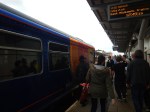

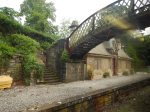
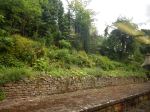
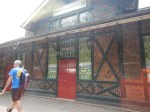
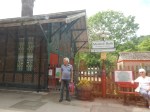
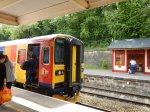

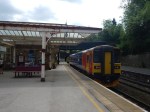




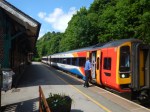
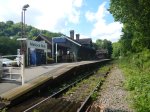
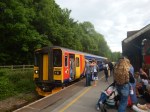
[…] Exploring The Derwent Valley Line, gives pictures and more details on my thoughts about the Derwent Valley Line. […]
Pingback by Connecting The Powerhouses « The Anonymous Widower | June 1, 2017 |
[…] with the Derwent Valley Line, which I wrote about in Exploring The Derwent Valley Line, the problem is probably down to a shortage of suitable […]
Pingback by By Rail Between Derby And Manchester via Stoke « The Anonymous Widower | June 2, 2017 |